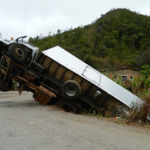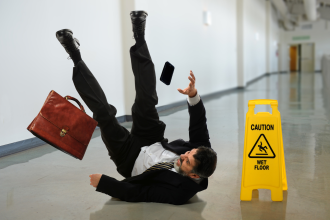Driving at night can feel peaceful – fewer cars, quieter roads, a chance to unwind with your favorite playlist. But there’s a darker side to that calm. Statistically speaking, you’re more likely to be involved in a serious car accident at night than during the day. Fewer vehicles might be on the road, but the risks are higher, and understanding why could help you stay safer after the sun goes down.
If you find yourself regularly driving in the evening, here’s what you need to know about the dangers of nighttime driving and how to protect yourself and others on the road.
The Statistics Are Clear: Nighttime Driving Is Riskier
According to data from the National Highway Traffic Safety Administration (NHTSA), fatal crashes are three times more likely to occur at night than during the day. That’s not just because of darkness – it’s a combination of factors that make nighttime driving more dangerous, even for experienced drivers.
It’s easy to assume that since the roads are less crowded at night, accidents should be less frequent. But what actually happens is the drivers who are out tend to face more high-risk conditions: low visibility, fatigue, and a higher chance of encountering impaired drivers.
Visibility Takes a Hit After Sunset
You might think your headlights are doing the trick, but your field of vision drops significantly at night. At best, your headlights illuminate about 250 to 500 feet ahead – less if they’re foggy, dim, or misaligned. That’s not a lot of distance when you’re moving at 45 or 60 mph.
Depth perception, peripheral vision, and color recognition all become less reliable in the dark. Objects and road markings become harder to spot, and you might not notice a pedestrian, cyclist, or animal until it’s too late.
If your vision isn’t perfect to begin with – or you haven’t had an eye exam in years – those limitations only get worse. Many drivers don’t realize how compromised their night vision is until they’re already struggling behind the wheel.
Fatigue Is a Bigger Factor Than You Might Think
Drowsy driving is one of the most underreported causes of nighttime accidents. And it doesn’t take falling asleep at the wheel to cause a crash. Even being slightly fatigued can slow your reaction time, reduce your awareness, and impair decision-making.
If you’ve ever blinked and realized you missed an entire stretch of road, you’ve experienced what’s known as “micro-sleep.” Just a few seconds of inattention can be the difference between a close call and a collision.
Fatigue is especially dangerous between midnight and 6 a.m., when your body naturally wants to be asleep. Commercial drivers, shift workers, and late-night travelers are most at risk during these hours.
Impaired Driving Increases After Dark
One of the biggest contributors to nighttime accidents is the increased number of impaired drivers on the road. Alcohol-related crashes are four times more likely to occur at night than during the day, according to the NHTSA.
Weekend evenings are especially high-risk. If you’re on the road after bars close or after major events, be aware that you may be sharing the road with people who are under the influence – even if they seem to be driving normally at first glance.
You don’t have to be drunk to be dangerous, either. Drug use, whether recreational or prescription, can have similar effects on reaction time, judgment, and coordination. Driving sober is always a must, but so is being alert to the fact that others might not be.
Rural Roads and Speeding Compound the Problem
Nighttime driving on rural roads presents another set of challenges. These roads often have little to no street lighting, tighter curves, and more wildlife activity. If you’re unfamiliar with the area, you might also miss warning signs or misjudge your speed heading into a turn.
Speeding, even slightly, becomes riskier in these conditions. The faster you’re going, the less time you have to respond to obstacles, especially when visibility is low. That’s one reason why fatal crashes often involve speeding combined with darkness.
What You Can Do to Stay Safe
You can’t control how others drive, but you can reduce your own risk behind the wheel. Here are a few practical tips that will make nighttime driving safer:
- Check your headlights regularly. Make sure they’re clean, bright, and aimed correctly. Dim or foggy lights can seriously reduce your visibility.
- Get your eyes checked. If you struggle with glare or halos at night, talk to your optometrist. You might need glasses specifically for nighttime driving.
- Slow down. Give yourself more time to react to unexpected obstacles or sudden stops.
- Avoid distractions. This should go without saying, but it’s even more important at night when your vision is already compromised.
- Watch for wildlife. Especially on rural roads, keep an eye on the shoulders and use high beams when there’s no oncoming traffic.
- Don’t drive tired. If you’re feeling drowsy, pull over and rest. A quick nap is safer than pushing through and risking an accident.
- Stay alert for impaired drivers. Keep your distance from anyone swerving, braking erratically, or driving far below the speed limit.
Adding it All Up
Nighttime driving requires more focus, better preparation, and extra caution. The risk of accidents is real, but it doesn’t mean you have to avoid driving after dark altogether. It just means you need to be more aware of the unique dangers that nighttime presents.















